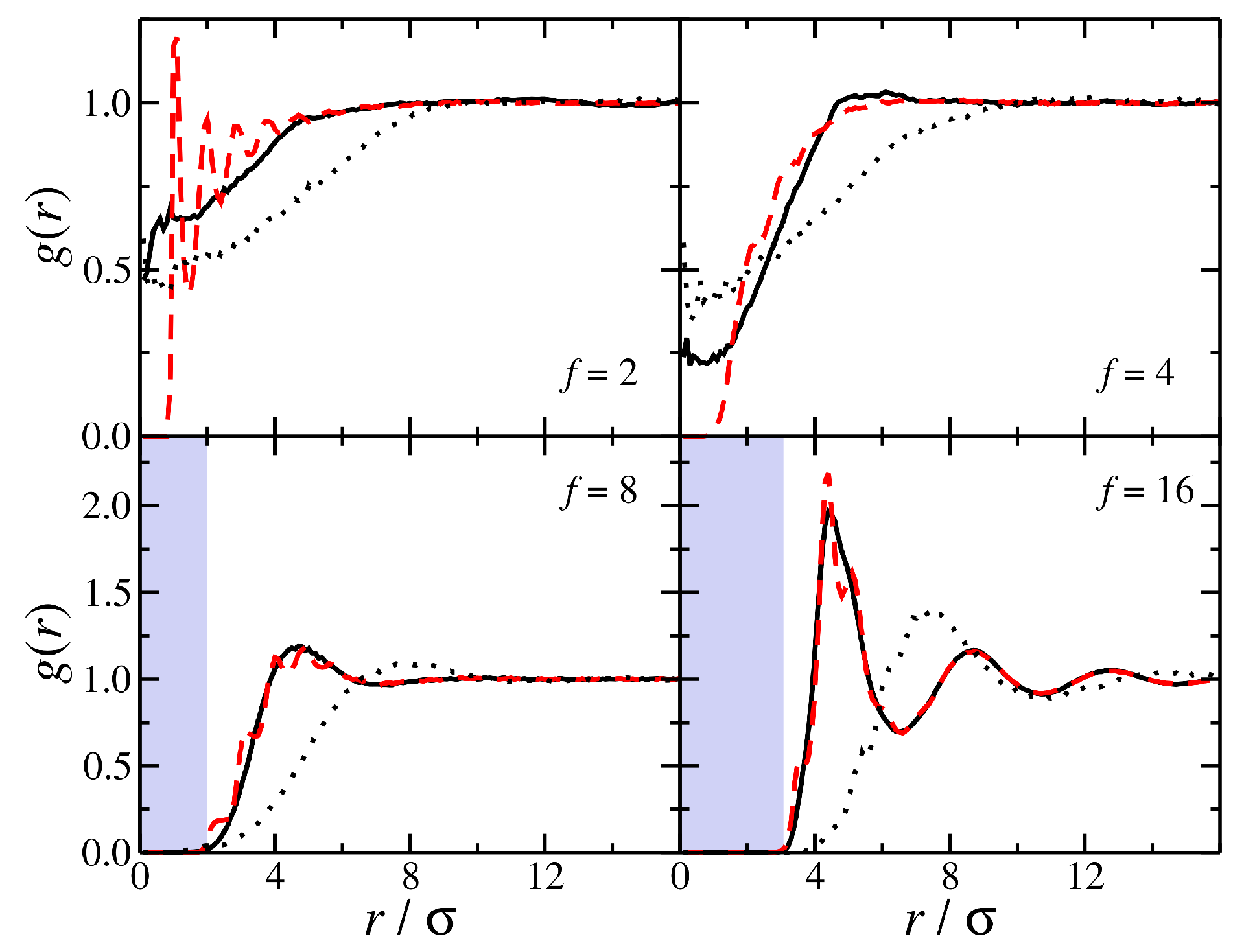

In addition to the effects of shear, the impact of temperature was investigated with respect to chain stretching and the formation of cylinders under shear.", This observation is in agreement with experimental findings. Our simulations suggest that a higher stress is required to achieve the sphere-to-cylinder transition in monolayer versus bilayer thin films because the wetting layers transfer momentum into the film by stretching the chains, which in turn causes higher shear stress for a given surface velocity. We find that shear-induced cylinder formation is closely related to stretching of individual diblock chains. Once a shear field is applied and above a critical shear rate, the spheres elongate and merge with their neighbors to form cylinders. The minority block has higher affinity for the confining surfaces, thus forming wetting layers whose chains interpenetrate those forming the microdomain layer(s). At zero-shear conditions and below the order-disorder transition temperature, thin films form a monolayer or bilayer of spheres. Parameters of the coarse-grained model were chosen to represent a polystyrene-polyisoprene copolymer with molecular weights of the blocks equal to 68 and 12 kg/mol, respectively, matching the system studied experimentally by Hong et al. In addition to the effects of shear, the impact of temperature was investigated with respect to chain stretching and the formation of cylinders under shear.Ībstract = "Shear-induced sphere-to-cylinder transitions in diblock copolymer thin films have been studied using coarse-grained Langevin dynamics simulations. © 2012 American Institute of Physics.Shear-induced sphere-to-cylinder transitions in diblock copolymer thin films have been studied using coarse-grained Langevin dynamics simulations. The diffusivity of the long chain nanoparticles exhibits a minimum at an intermediate temperature and volume fraction where the polymer brushes of neighboring particles overlap, but must stretch to fill the interparticle space. Nanoparticles with longer chains exhibit a more gradual increase in the structural relaxation time with decreasing temperature and concomitantly increasing particle volume fraction. Solvent-free nanoparticles with short chains undergo a glass transition as indicated by a vanishing diffusivity, diverging structural relaxation time and the formation of body-centered-cubic-like order. Whereas longer chains lead to a larger hydrodynamic radius and lower relative diffusivity for grafted particles in a melt, bulk solvent-free nanoparticles with longer chains have higher relative diffusivities than their short chain counterparts. Solvent-free, polymer-grafted nanoparticles as well as grafted nanoparticles in a melt were compared to a reference system of bare (ungrafted) particles in a melt. Abstract The diffusivity and structural relaxation characteristics of oligomer-grafted nanoparticles have been investigated with simulations of a previously proposed coarse-grained model at atmospheric pressure.


 0 kommentar(er)
0 kommentar(er)
